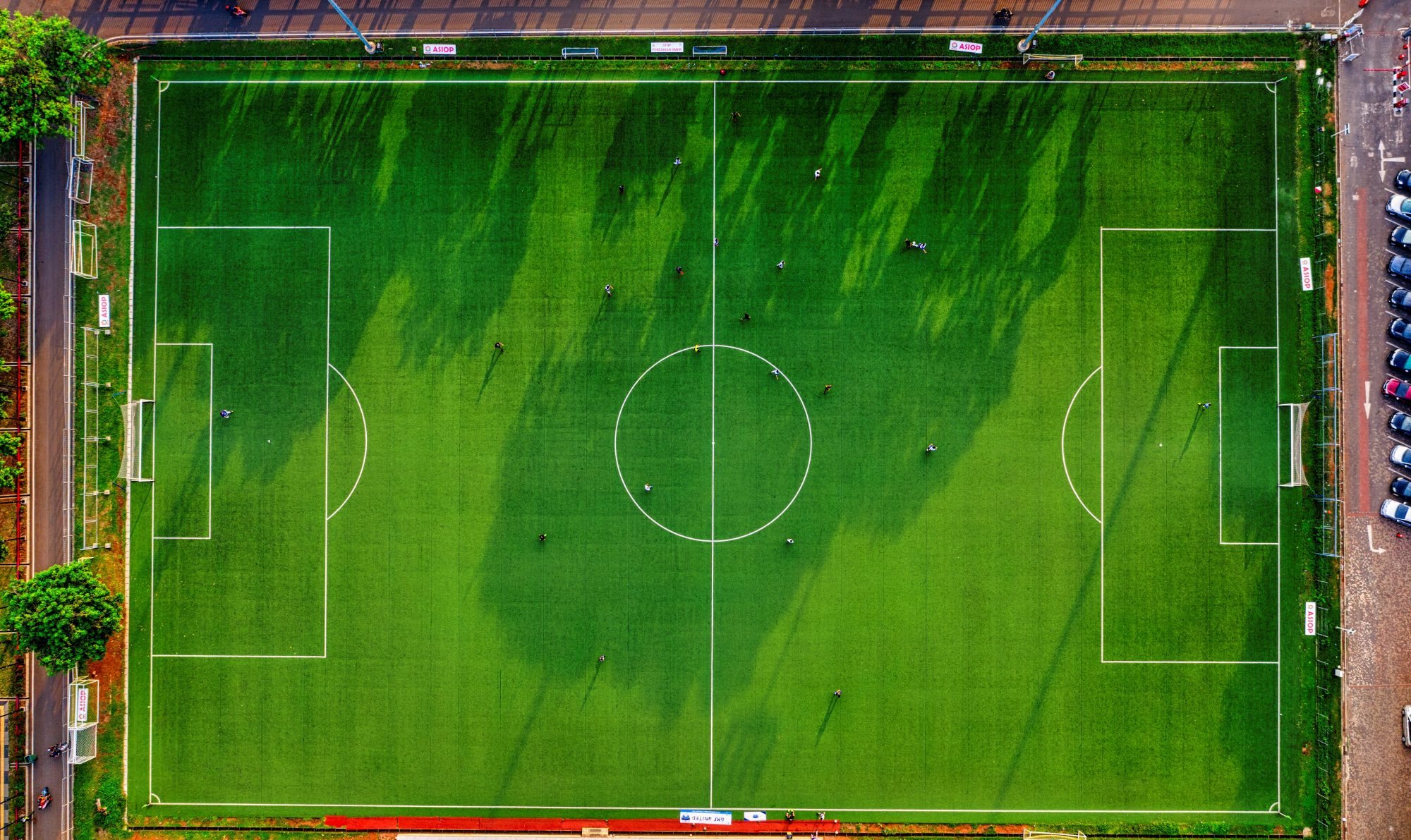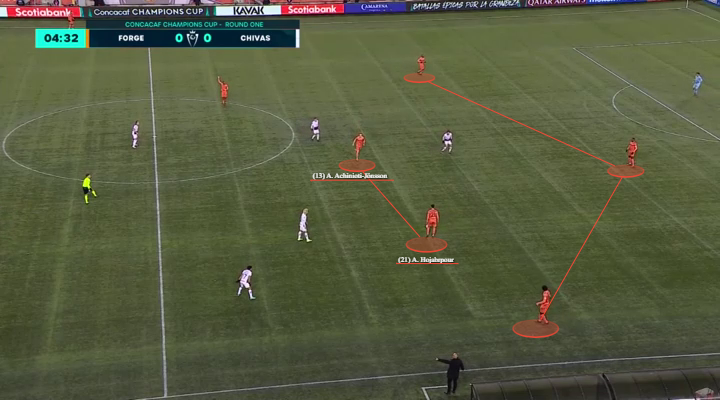Since Antonio Conte’s arrival at Inter Milan, the Italian giants have transformed into the most effective side in all of Serie A. Other than disappointments in the UEFA Champions League and losing last season’s Europa League final, Conte’s start to life at San Siro has gotten off without a hitch. I Nerazzurri narrowly missed out on the title to Conte’s old side Juventus last season by one single point, and this season they look favourites to finally dethrone the Old Lady from securing another crown. But the results and the performances are not the only impressive components about Antonio Conte’s functional Inter Milan. The Italian manager’s tactics have been remarkable as they have been throughout his career, and so many players have taken their games to new heights under the influence of the former Premier League winner. Here is a tactical analysis all about Antonio Conte’s Inter Milan in 2020-21.
SYSTEM OF PLAY: 3-5-2

Antonio Conte has used back-three systems throughout his career, and the use of wing-backs has practically become synonymous with his name. It’s therefore no surprise that Conte has primarily used a 3-1-4-2 or 3-5-2 system throughout his time at Inter thus far, without playing a single match using a back-four formation in two seasons.
In terms of personnel, Conte has an extraordinary mix of experience and youth, in addition to some of Serie A’s best players who haven’t been given enough credit for their work over the past few years and are only now coming to the forefront of media attention. One of those players is the 36-year old Samir Handanovic who has always been one of the best goalkeepers in the world but is only now starting to get true recognition for it. The Slovenian keeper has conceded just twenty-five goals in his twenty-six appearances so far, with a save percentage of nearly 75%. His impressive record has however not been entirely his own doing; with a stellar back-three in front of him doing excellent work as well. Experienced centre-backs Milan Skriniar and Stefan De Vrij have continued in the side, while Andrea Bastoni has transitioned into the eleven after acting as Diego Godin’s understudy last season. At his very best, Skriniar is one of the very best defenders in Serie A, and has rebuilt that reputation again this season.
Embed from Getty ImagesBut as already noted, an Antonio Conte side cannot truly be an Antonio Conte side without wing-backs, and in new addition Achraf Hakimi, Conte has arguably the very best at the art in his team. The young Moroccan was exceptional in his two seasons at Borussia Dortmund on loan from Real Madrid, even scoring five goals with ten assists in his final season at the club. He was an inevitable match made in heaven for Inter Milan and Conte’s system, and Inter secured the deal for an absolute steal of just £36 million. On the other side, Conte has a few excellent options in Ivan Perisic and Ashley Young, both of whom are undoubtedly aging and may need replacing in the future. Danilo D’Ambrosio on the other hand hasn’t been given quite as much time this season, while Cristiano Biraghi has returned to Fiorentina to step into that Marcos Alonso void at the club. Victor Moses and Antonio Candreva have also left the club after competing for the right-wing-back slot last season, as Hakimi has been able to fulfill that wing-back promise better than anyone else before him.
Embed from Getty ImagesCentral midfield is another area of the field in which Conte has several options, but Nicolo Barella has firmly nailed down a starting position this season ahead of the likes of Roberto Gagliardini and Stefano Sensi. Christian Eriksen and Arturo Vidal have battled to partner Barella on the left of the midfield three, with Marcelo Brozovic an undeniable figurehead in the side. With Vidal being a slightly less dynamic and more defensive player to Barella, Conte’s 3-1-4-2 system of last season has shifted into more of a natural 3-5-2. Christian Eriksen has operated in a much different role than he did during his Tottenham days, acting almost as a double-pivot alongside Brozovic, as Barella remains higher and wider. This sort of lopsided shape aids in Inter’s right-sided dominance, with the likes of Hakimi and Lukaku. It also opens corridors for both Martinez and Lukaku to drop into the midfield lines at various moments. No side has attacked more down the right, and no side has attacked less down the left, as the Black & Blues constantly look to get their best players on the ball.
Embed from Getty ImagesSpeaking of their best players, Lautaro Martinez and Romelu Lukaku are two of the other irreplaceable members of the side, forming one of the most dynamic and fruitful attacking partnerships in the world. They’ve been so good and so efficient that even someone with the quality of Alexis Sanchez hasn’t been able to break into the starting eleven.
So those are the players and some of the roles they fulfill, now let’s get into more of the specific tactics that Conte utilizes in this incredible 3-5-2 system.
dynamic counter attack
Embed from Getty ImagesAn essential reason for Inter Milan’s success this season is their phenomenal counter attack, and over-arching attacking presence in the final third. I Nerazzurri have taken fewer shots than Juventus, Napoli and Atalanta this season, but no team in the league have scored more goals. This means that Inter are deadly when it comes to converting their chances and making the most out of their attacking play. They don’t tend to shoot from distance, instead waiting for the right moments to get in and around the eighteen yard box and make their magic happen. According to WhoScored?‘s metrics, they also have the most “counter attacking” goals in Serie A this season, with their speed and agility from the likes of Hakimi and Lukaku always working in tandem to get in behind the opposition defense. Simultaneously, they remain a very elegant attacking side. The Black & Blues aren’t ones to dribble through their opposition and take players on 1v1. They may burst up the field and run with the ball at speed when they have space to do so, but their counter attacks are a collective approach. In fact, all of their attacks take a collective approach, rather than relying on the individual brilliance of someone like Lukaku to score a goal or Christian Eriksen to pick a pass. Conte’s men are the only team to have two players inside the top five for scoring (Lukaku and Martinez). Meanwhile, Achraf Hakimi is one of the top scoring wing-backs or “defenders” in the league, and even their defensive midfielder Marcelo Brozovic has chipped in at the attacking end with six assists. Inter’s ability to attack at speed, with loads of width and loads of firepower, allows them to be one of the deadliest sides in the league. But the fact that they have so many dangerous players makes it even more impossible for opposition sides to stop them.
Making matters more complicated for their opposition, Lautaro Martinez and Romelu Lukaku are also known to swap positions and make varying runs in the final third. Both are not only capable goal-scorers, but also capable chance-creators. Lukaku leads the team with nineteen goals in his twenty-six matches, and also leads the team in assists, sitting at eight. Martinez meanwhile has fourteen goals, with five assists to his name. Even Alexis Sanchez has chipped in with five goals and five assists, making the most of his minutes on the pitch. In the area of the field that it matters most, Inter Milan have some of the most capable goal-scorers and deadliest finishers on the planet.
PLAYING OUT FROM THE BACK
Embed from Getty ImagesInter Milan play a possession-based game, focusing on intentional build-up, width and intricate positional movements to open up space. I Nerazzurri have completed the fewest long passes per game in the league, and when looking at their players and style of play, it’s evident to see why. Instead of direct football, thrusting the ball forward and long, the strikers will drop deep one at a time, coming closer to the ball and engaging in the build-up. This is done more so to open up pockets of space in the moment, rather than to be an extra number and create overloads. Passes are therefore often thrust into the forwards at the exact moment they drop deep, rather than the striker involving themselves in any sort of longer spells of possession in their own half. They receive the ball and then either advance vertically by running with it, or quickly play it off to a teammate before spinning in behind the defense for a chance at getting on the end of the very next pass into space up the field. This exact same method may be used in counter attacks, as one striker comes deep to play a quick one-two and the other remains high and wide to get on the end of a cross or through-ball.
Embed from Getty ImagesIn initial build-up phases, the back-three will often circulate the ball right to left, looking for opportunities to play in the two sitting defensive midfielders. Brozovic has a particularly important role to play in the build-up, often dictating switches of play and spreading the ball wide to the wing-backs, or vertically to a dropping striker. However, his first line of vision is not always toward a progressive pass, and he may instead opt to play in one of the two outside-centre-backs first, in helping the team further open up wide spaces as the wing-backs hug the touchline. Although this approach sounds very patient in practice, Inter’s movements certainly are anything but and their players have a keen eye for quickly interpreting the space to open up new corridors, maintain possession and eventually advance in attack. Although sometimes individual players may pop up in unusual areas and take on slight positional tweaks from what you would expect, there isn’t much in the way of positional interchange or rotation in the build-up. Their players stay relatively consistent to one specific role in build-up phases rather than multiple, but make their movements at speed.
INDUSTRIOUS WING-BACKS & wide overloads
Embed from Getty ImagesAs customary of an Antonio Conte team, Inter Milan play with high-flying wing-backs who play a crucial part to all aspects of their game. The wing-backs are key to the build-up, key to helping the team surge up the field at speed, vital to the counter-attack, and paramount to the team’s ability to find the back of the net. During longer spells when I Nerazzurri attempt to break down an opposition defense, the team form what most closely resembles a 3-3-4 attacking shape. This involves both wing-backs advancing high up the pitch rather than one at a time, and a frequency to which one wing-back crossing the ball to another becomes a regularity. A reasonably high number of crosses also come in from central midfielders Nicolo Barella, Christian Eriksen and Marcelo Brozovic, as they remain withdrawn and attempt to create chances or thread balls through from deeper on the field. Eriksen is yet to assist a goal in the league as he’s transformed into more of an elegant passer involved in their build-up more than their attack. But Barella and Brozovic have assisted a combined five goals from crosses, seven when including corner kicks. This illustrates first and foremost the quality that these players possess to deliver the balls into the box, but also their ability to adopt such a high position due to the way Inter play. The entire team condense the field vertically, but stretch it horizontally. The wing-backs remain high and wide and create variety to their attacking play, by linking up with the central midfielders and strikers nearby and then advancing into the box for through-balls, or crosses coming down the other side. The Black & Blues are fantastic at creating overloads in the wide areas, and Barella’s wide role on the right-hand-side gives Hakimi even greater freedom to work his magic in all kinds of different attacking areas. These overloads then free up even more space for Conte’s team to attack down the other side, on a switch of play or cross into the box.
The wing-backs and central midfielders are also crucial to defensive transitions, condensing the field after losing the ball. The fitness levels of players like Hakimi and even the aging Ashley Young are quite remarkable, and this helps the team to win back the ball in wide areas when they lose possession. The defensive organization of the team to always remain compact and in close proximity between the lines of the midfield three and back-three in particular also aids in these quick defensive transitions.
CONCLUSION
Between finishing second in Serie A last season, narrowly missing out on a Europa League title, and now looking like clear favourites for the league this season, life under Antonio Conte could not have gone much better for Inter Milan so far. The Italian manager has maintained all of his key principles of play from previous managerial stints, but has adapted his style of play to fit the personnel of the team. Instead of opting for a fluid 3-4-3 / 3-4-2-1 formation that he used at Chelsea, the Italian manager has switched to a possession-based 3-5-2, with intricate movements from the two strikers in particular. But the reliance on industrious wing-backs, counter attacking, and intelligent movements when playing out from the back have all remained during his two seasons at Inter so far. With Juventus suddenly in a bit of a slump, Inter Milan look destined to win the league in 2020-21, and the future for both I Nerazzurri and Antonio Conte looks very bright.
So there it is! A tactical analysis of Antonio Conte’s league leading Inter Milan in 2020-21. Be sure to check out more Tactical Analyses and follow on Twitter/Instagram @mastermindsite. Thanks for reading and see you soon!
subscribe via email free!
You might also enjoy…
-> Antonio Conte – Inter Milan – Tactical Analysis (2019-20 Edition)
-> Stefano Pioli – AC Milan – Tactical Analysis
-> Maurizio Sarri – Juventus – Tactical Analysis
-> How Chelsea Won The 2016-17 Premier League Title Playing 3-4-2-1







19 thoughts on “Antonio Conte – Inter Milan – Tactical Analysis (2020-21 Edition)”